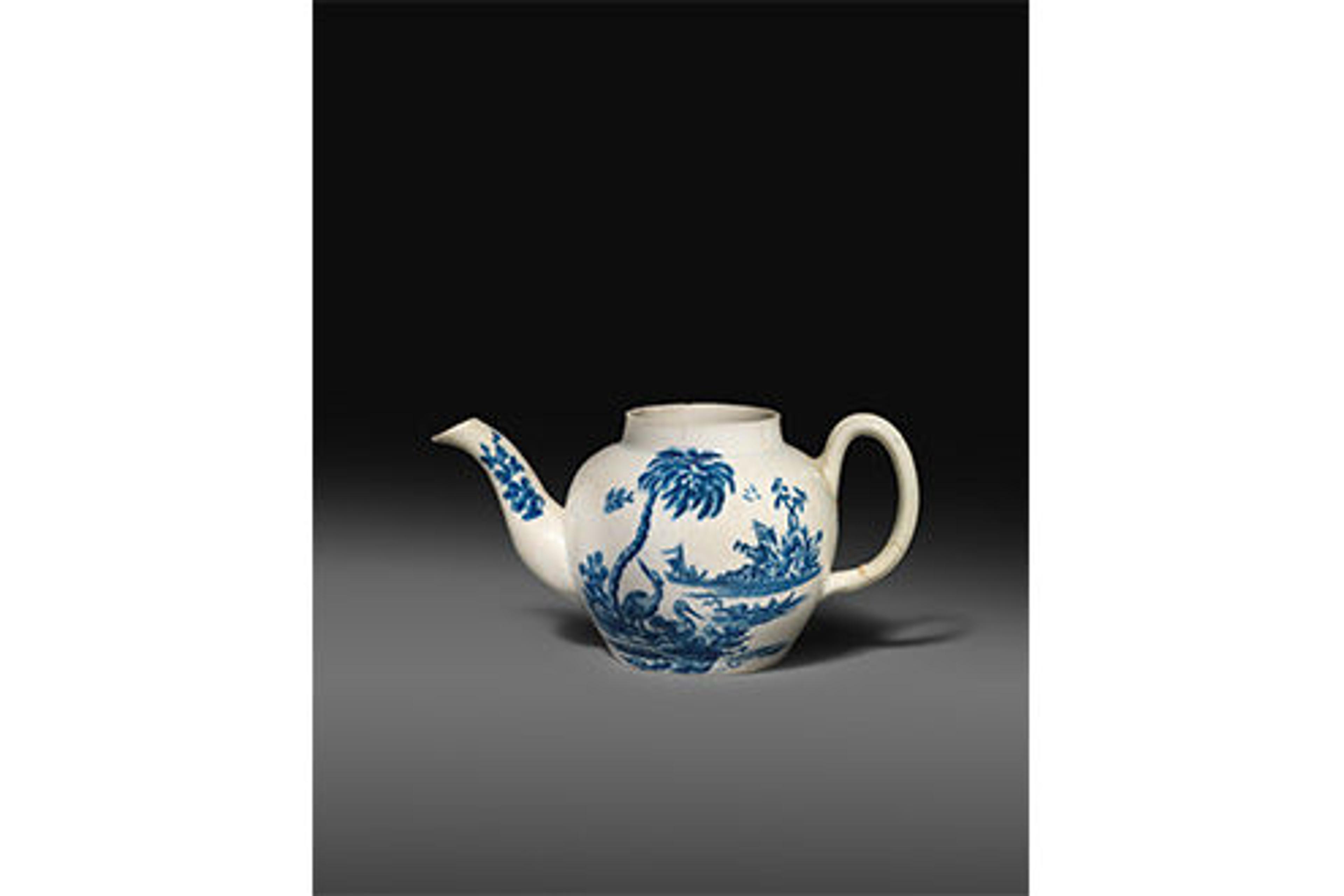
(New York, February 23, 2018)—The Metropolitan Museum of Art has acquired a rare and delicate porcelain teapot, a unique example of the earliest porcelain produced in colonial America, it was announced today. The 3-1/2-inch-high teapot with underglaze blue decoration is one of only seven known examples attributed to the South Carolina porcelain works of John Bartlam, which operated around 1765–69. (The other examples—four tea bowls and two saucers—are from the same set; the teapot is the most ambitious and important of the forms.) Funding for the purchase was provided by gifts from Richard Chilton and Lulu Wang, departmental funds, and general Museum purchase funds.
In describing the object, Alice Cooney Frelinghuysen, Anthony W. and Lulu C. Wang Curator of American Decorative Arts in the American Wing at The Met, said: "This historical teapot is prime evidence of the ambition and success of Bartlam’s enterprise and a tribute to America’s intrepid and entrepreneurial spirit. Its use of porcelain clay from the Carolinas is a testament to the nation’s rich raw materials, and the telling use of the palmetto tree motif—the state tree of South Carolina—further underscores the American connection. I am so grateful to the Museum's trustees who recognized the importance of the teapot and generously supported its acquisition. We look forward to displaying it in a place of honor among other examples of American porcelain later this spring."
Evidence of a porcelain factory dating to the late 1760s in Cain Hoy, South Carolina (outside Charleston), came to light through research and archaeological excavations in the early 1990s. The factory predates Gousse Bonnin and George Anthony Morris’s short-lived American China Manufactory in Philadelphia (1770–72), which had previously been considered the earliest successful porcelain factory in the country.
Trained in Staffordshire, England, John Bartlam established his pottery in South Carolina with the intention of competing with the popular luxury porcelains with underglaze blue decoration that were produced in England and imported to the colonies. Deposits of the special clay required to make porcelain had only recently been discovered in the Carolinas and were being mined and shipped to England from Charleston. In 1767, Josiah Wedgwood wrote of his concern that an American pottery—Bartlam’s “Pottwork in Charles Town”—would supply the American market that had been Wedgwood’s stronghold.
The shape and decoration of the Bartlam teapot is consistent with popular English porcelains of the 1760s, with which the Bartlam enterprise sought to compete. It represents the skill of the potter and decorator both in terms of materials and technique: it has a very white porcelain body, is thinly potted, and has charming landscape vignettes in the chinoiserie style on both sides. The quality of the decoration suggests that Bartlam had a highly skilled, probably English, engraver in his employ. A singular feature of one of the scenes is the palmetto tree motif, which appears on the known tea bowls and saucers. A motif unknown in English porcelain, the palmetto (salbas palmetto)—the state tree of South Carolina—is a direct reference to the teapot’s origin. As a final clue, sherds from the Cain Hoy excavation match the known tea bowls.
# # #
February 23, 2018